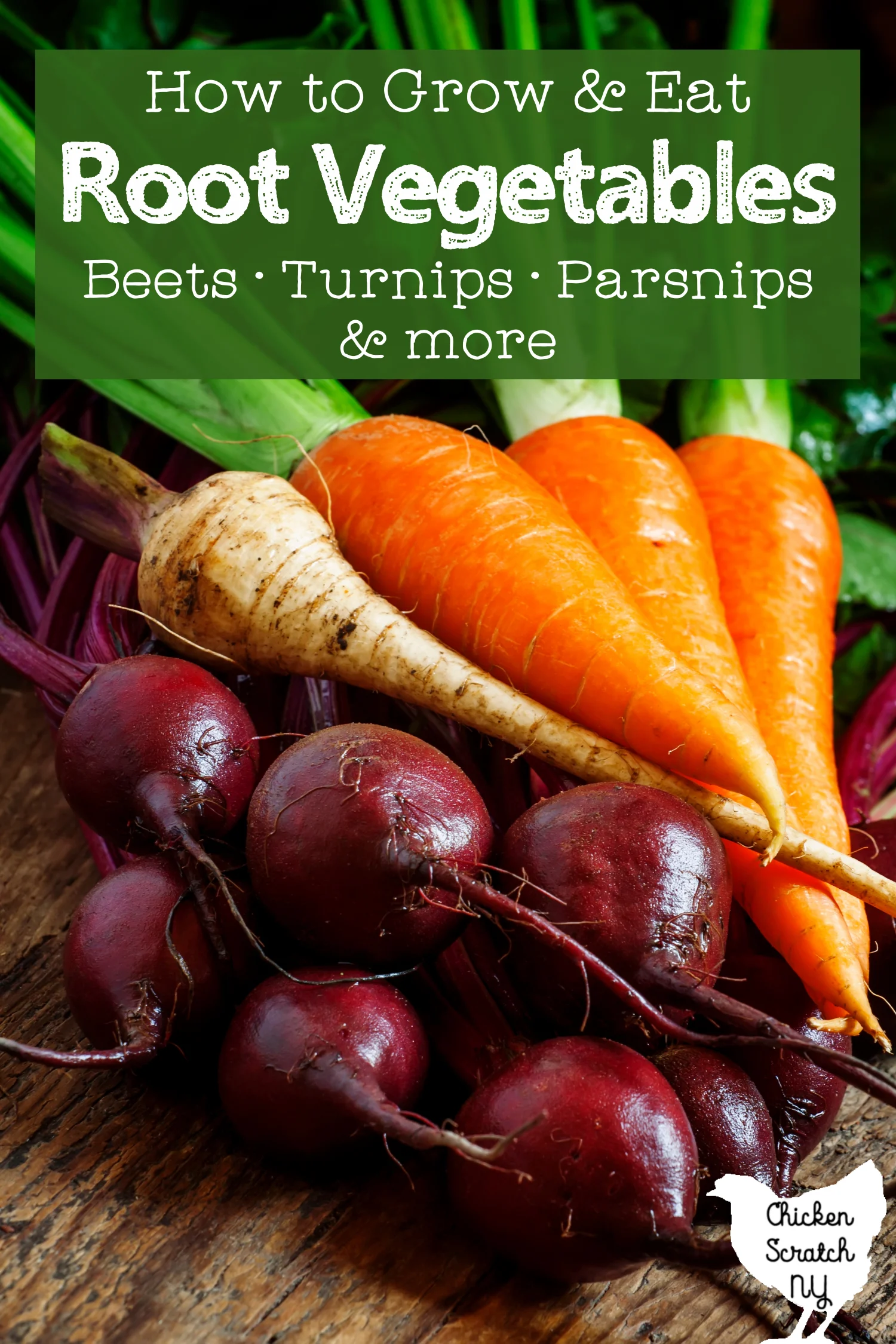Growing broccoli is a great way to kick off the gardening season! Broccoli is an easy-to-grow, cool-weather vegetable offering up a surprising amount of variety for home gardeners.

Close your eyes and imagine broccoli, now open them so you can keep reading. It probably looks something like that lovely green monster above right?
Well, that’s just the beginning! One of my favorite things about growing vegetables is getting to explore all the strange and unique options you’ll never find in your local grocery store!
How to Grow Broccoli
Broccoli is a cool-season vegetable crop that can be grown in the spring or fall. IF you live in a climate with mild summers you can grow it all season long.
Some types do best when given a head start indoors under grow lights but others will bolt from the stress and your best bet is to plant them directly in the garden.
If you want to get into the science of it, almost everything I’m talking about today is a variation of one species, Brassica oleracea. Along with the different broccoli cultivars, this also includes cabbages, kale, Brussels sprouts, cauliflower, and collard greens.
The exception is broccoli rabe which is a variety of Brassica rapa making it more closely related to turnips than the rest of the broccoli family.
Based on the obvious similarities in the appearance and flavors of all these plants, seeds, and sprouts it’s not hard to believe that they’re essentially the same thing.
It really is amazing what you can do with selective breeding! And it’s a lot more fun with plants than with dogs where the overemphasis of certain traits is delicious and not crippling.
Starting Broccoli Indoors
Before you get growing check the back of your seed packet for the variety-specific growing info. Broccoli plants grown specifically for the florets or heads are usually safe to start indoors 4-8 weeks before your last frost date.
Other kinds of broccoli that are grown primarily for shoots and leaves, like Chinese Broccoli and Broccoli Rabe should be planted directly in the garden. Starting indoors and trying to transplant them out will usually lead to bolting and leave you disappointed.
Read more about Ordering Seeds
They can be transplanted right around your last frost date after being hardened off (acclimated to the cold, cruel world). Broccoli seeds germinate best around 65-85 degrees but they grow best at cooler temps in the low 60’s.
The best way to pull those temperatures off is to start your seeds on a heat mat and then move them to a cooler location under lights until they can be moved outdoors.
Broccoli seeds on a heat mat germinate almost instantly, I swear you blink and they’re up!
For best results, you want to keep the light as close to the broccoli seedlings as possible, if you don’t have strong enough light the baby plants will stretch out and get ‘leggy’.
Leggy seedlings are weak seedlings and weak seedlings aren’t going to set you up for success.

Assuming your weather cooperates you can move your broccoli seedlings out to the garden when they have their first set of true leaves and are about 3″ tall.
You can plant them out in the garden about an inch deeper than they were in the seed starting trays.
Planting Broccoli in the Vegetable Garden
Spacing is another thing you’ll need to check your packets for, some varieties are compact while others produce large sprawling plants. For heading broccoli aim for 18″ apart in all directions.

Broccoli is a thirsty and hungry plant, if you want it to grow well you need rich soil with a consistent moisture level.
Working aged compost and leaf mold into the soil before you plant will start you with a solid foundation and adding a thick layer of mulch will help keep the soil from drying out (it also does a great job keeping the weeds from taking over).
Learn How to Make Leaf Mold & Why You Need to Use it in Your Garden
If you notice your plants are stunted, the leaves are yellowing and the stems are purple give them a healthy dose of fish emulsion or compost tea for a nutrient boost.
Types of Broccoli
The different types of broccoli are largely made up, remember they’re all the same thing! The big differences are in plant appearance, how you harvest, and how they grow best.
Head Broccoli
I don’t know if this is the technical term but this is your standard, run-of-the-mill broccoli. Big green plants that put most of their effort into one large head potentially with smaller side shoots following the main harvest.
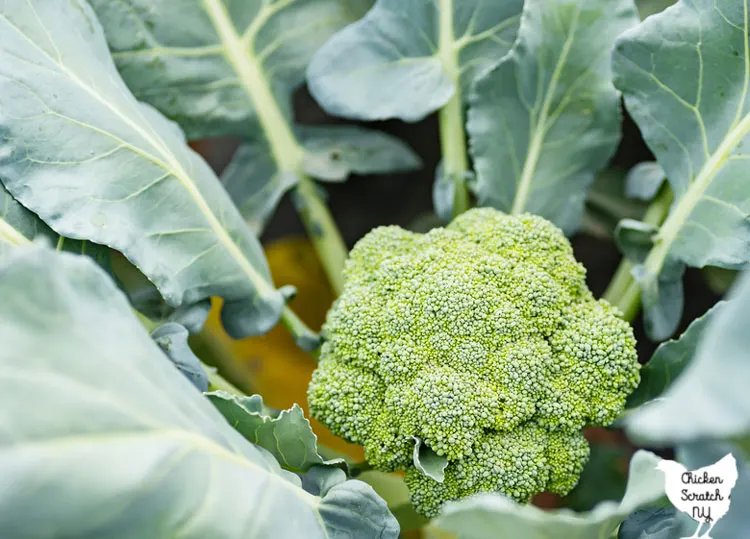
If you want to grow broccoli but you don’t want to start your own from seed this is the kind of plant you’re going to find for sale at a greenhouse or a big box store.
Waltham 29 is one of my favorite heirloom varieties, the plants and florets are a dusty blue-green color, and thanks to the additional side shoots it keeps your plate full for a while.
It’s going to take you about 75 days to go from seed to harvest with this variety, the small 24″ plants are compact for broccoli and do well in containers.
Non-heading or Sprouting Broccoli
In general, I prefer garden plants that keep going, it’s one reason I’m such a huge fan of growing summer squash. Sprouting broccoli is the summer squash of the broccoli lineup.
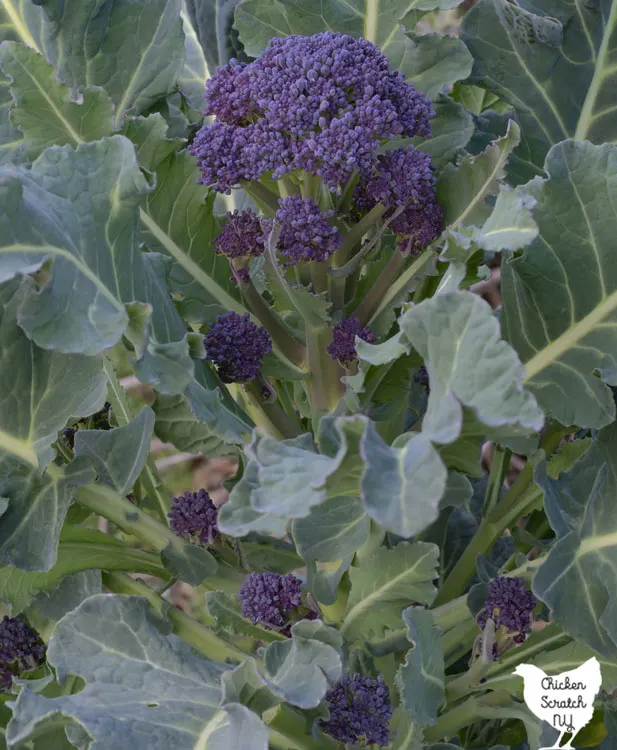
When I’m picking out my broccoli seeds I like to pick varieties that are known for side shoot production. Instead of putting all its effort into one glorious head, it produces oodles of smaller side shoots.
You won’t get the huge, grocery store-style heads from these varieties but they will offer up more harvest volume in the long run.
Chinese Broccoli (Kailaan or Gai Lan)
If you’re looking for something unique to grow this year why not give Chinese broccoli a chance? Grown more for its shoots and leaves than its florets it’s a great pick for areas with crazy temperature swings that might cause traditional broccoli to bolt.
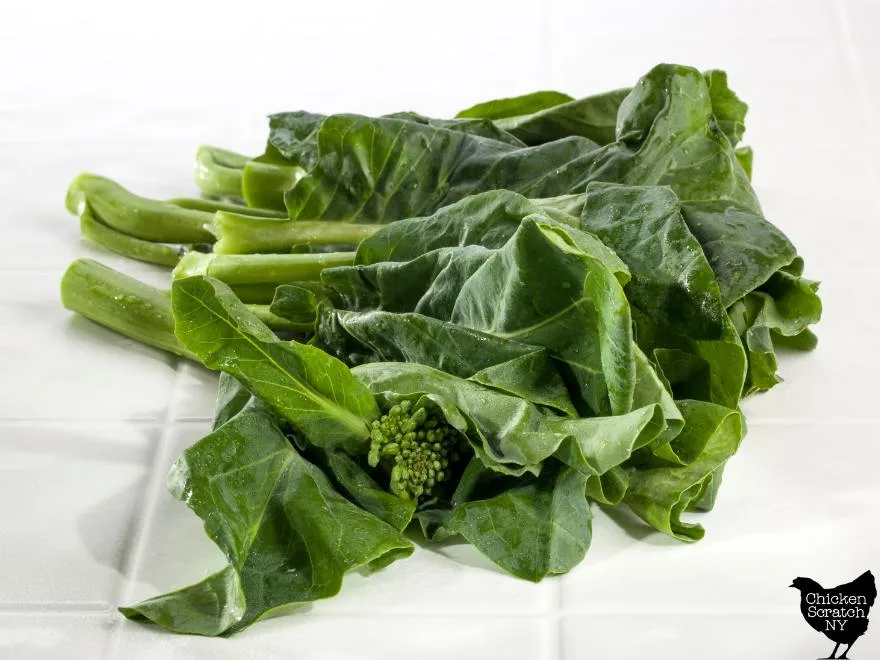
Chinese broccoli should be planted directly in the garden 1/2 inch deep with about 10 inches between plants and 18″-24″ between rows. The tall plants (around 2-2.5 feet tall) only get about 18 inches wide and the stalks resemble asparagus in their upright growth.
If you plant your seeds a bit too close you’re in luck because you can cook up and eat the thinned plants! For full-sized plants you’re looking at 60-70 days from planting to harvest.
It can be used interchangeably with standard broccoli in the kitchen but it is known for having a stronger, more broccoli-y flavor you can also use it in Chinese recipes like Blanched Gai Lan with Oyster Sauce or Stir-fried Chinese Broccoli with Ginger and Garlic
Broccolini
It might seem like we’re making up words now, and that’s good because that’s exactly what we’re doing! Broccolini isn’t baby broccoli, it’s a hybrid between regular old broccoli and Chinese broccoli.
Don’t let the word hybrid scare you, there are no glow-in-the-dark jellyfish genes inserted in a lab here!
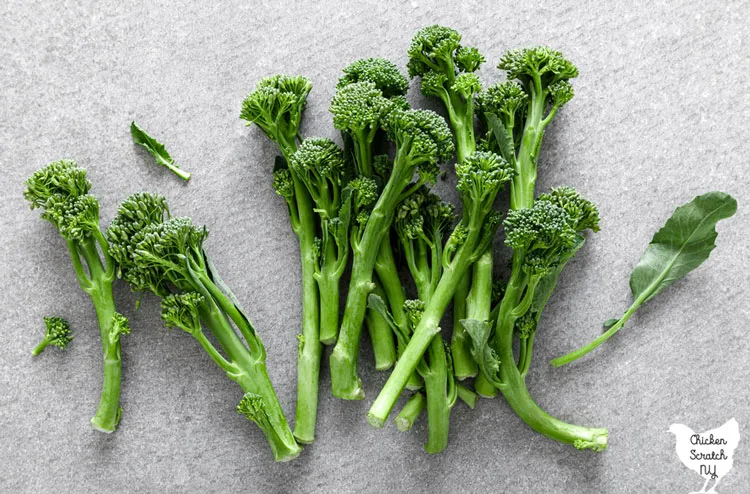
If you’re a fan of broccoli stems (I can’t be the only one out there!) this is the broccoli for you. You still get the flower part but the main focus is on the tender stems.
Seeds for this one a a bit harder to track down due to it being a hybrid and you’ll have the best luck searching for “Aspabroc” which is honestly a terrible name that sounds like something the Power Rangers fought on Saturday morning.
It was developed in the early 1990s so it’s younger than a lot of people reading this (and the person writing this) and is supposed to have a similar texture to asparagus, hence the name.
Again, because it’s a hybrid, the seeds will be pricier and you won’t be able to save your own if you want it to breed true to the parent plants.
Like it’s relatives, Broccolini performs best when planted in the cooler spring or fall months. If you keep the shoots harvested before the buds swell they can produce all season long.
The upright plants get about 2 feet tall and can be spaced 8-10 inches apart making them a great choice for small spaces and containers.
This recipe for Roasted Broccolini from Well Plated makes the most of the long, tender stems and leaves lots of room for personalization.
Broccoli Rabe or Rapini
We’re almost to the end so stick with me! Next up we have another broccoli relative grown mainly for it’s stems and leaves with a little bit of floret thrown in, Broccoli Raab or Rapini or Broccoletti.

Broccoletti is the Italian name and it’s a common vegetable in Italian cooking. One of its stand-out characteristics is its bitter flavor.
There are ways to mitigate the bitterness or you can really lean into it. In my opinion, if you don’t want the bitterness, just eat a different kind of broccoli.
This recipe for Italian-Style Garlicky Broccoli Rabe is a great introduction to cooking with broccoli raab and she has lots of other options for getting the most out of this vegetable crop in the kitchen.
Back to the garden, along with a prolific crop, I really love a fast crop! If you can go from seed to plate in less time than it takes for me to forget you exist? That’s golden in my book!
Rapini is a fast grower, it’s ready to harvest after about 45 days. That’s about a month sooner than anything else on this list!
For best results start your plants in the garden 4-6 weeks before your last frost date with 6-12″ between plants and 18-24″ between your rows. The small plants are only about a foot tall and only 8-10 inches wide.
Romanesco
If you love growing odd things Romanesco broccoli is the pick for you. The pointy heads feature a Fibonacci spiral pattern and they look like they shouldn’t be real!
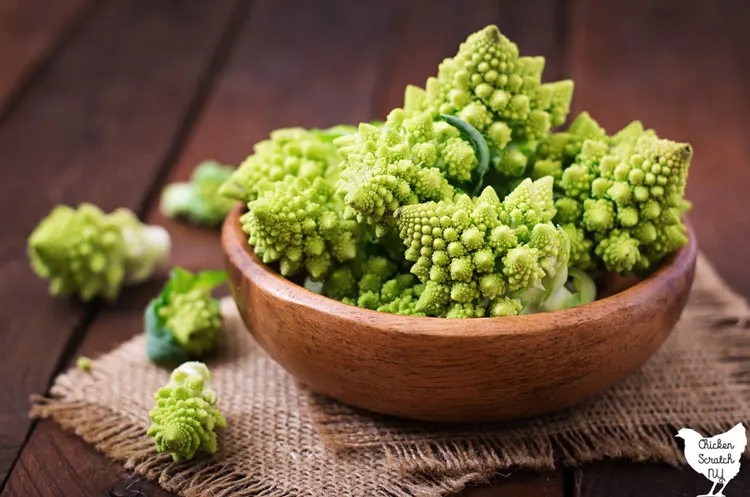
Romanesco broccoli isn’t a true broccoli, it’s a cross between broccoli and cauliflower but I’m including it because it’s just too wild looking to leave out, and honestly all these lines are pretty blurry anyway.
The plants are much bigger than the regular broccoli and require both more space and more time. They get to be about 3 feet tall and 2 feet wide and you’re looking at 70-100 days until you can harvest them.
In my opinion, this is the kind of plant you grow for a special meal or as a decorative addition to a flower garden, not to stave off famine.
For best results start them indoors 4-6 weeks before your last frost date or 12 weeks before your first fall frost.
Broccoli Sprouts
This might be cheating, they aren’t going into your garden but broccoli sprouts are a delicious treat that every broccoli lover should try at least once!

Broccoli sprouts have a quick turnaround, from start to finish the entire process only takes about 7 days! That makes radishes seem slow.
Just make sure you start out with broccoli seeds intended for sprouting and you’re golden.
Read more about Growing Sprouts for Fresh Food Anytime
Check out my Vegetable Gardening page for more information or start here:


